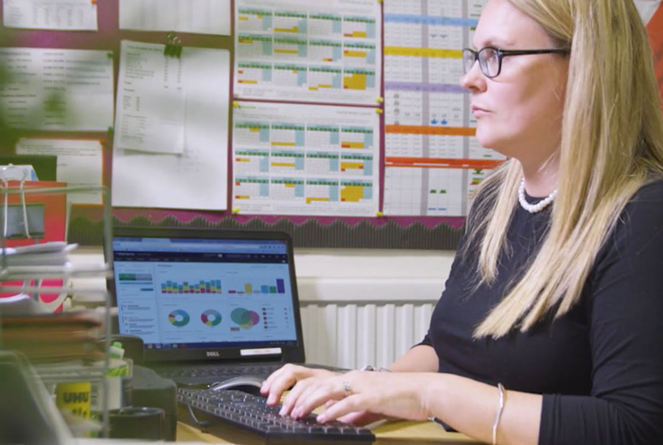Introduction
In recent times, schools have experienced a troubling increase in safeguarding incidents, prompting growing concerns about the well-being of pupils and the overall safety of educational environments. This concerning trend necessitates a closer examination of the contributing factors and a proactive exploration of strategies to manage and mitigate safeguarding incidents effectively.
A joint survey conducted by the NSPCC in collaboration with the teaching union NASUWT in 2023 sheds light on the gravity of the situation. The survey's findings, involving over 8,000 teachers and senior leaders, revealed a significant surge in safeguarding referrals across UK schools. A striking 93% of respondents acknowledged an escalation in safeguarding referrals within their respective schools over the past year. Notably, 87% of those surveyed reported a rise specifically in neglect referrals, highlighting a worrying trend in child welfare issues coming to the forefront of schools' attention. This data underscores the urgency for schools to address and tackle the root causes of the surge in safeguarding incidents to ensure the well-being and safety of their pupils.
Understanding the Rise in Safeguarding in Schools
Several factors contribute to the rise in safeguarding incidents within school settings. The complexity of modern society, increased awareness of mental health issues, and changes in family structures are among the various elements influencing this surge.
Technological Advances: The rise of digital platforms and social media exposes pupils to new risks, including cyberbullying, online harassment, and inappropriate content. Schools must adapt their safeguarding measures to address these evolving technological challenges.
Mental Health Awareness: While the growing awareness of mental health issues is positive, it also sheds light on the struggles pupils face. Identifying and addressing mental health concerns is now a critical aspect of safeguarding, requiring schools to invest in mental health resources and support services.
Family Dynamics: Changes in family structures and dynamics, including increased instances of familial stress, domestic violence, and economic hardship, contribute to challenges in ensuring the safety and well-being of pupils both inside and outside the school environment.
Legal and Regulatory Changes: Evolving legislation and safeguarding guidelines place additional responsibilities on schools, requiring them to stay abreast of new requirements and adjust their policies and procedures accordingly.
Strategies for Managing the Rise
To effectively manage the surge in safeguarding incidents, schools must adopt a multifaceted approach that addresses both the root causes and the immediate concerns. Here are key strategies for navigating this challenging landscape:
Comprehensive Training Programs
Invest in ongoing and comprehensive safeguarding training programs for all staff members. This includes educating them on the latest safeguarding guidelines, recognising signs of abuse or neglect, and providing the necessary skills to handle sensitive situations.
Digital Literacy Education
Integrate digital literacy education into the curriculum to equip students with the skills to navigate the online world safely. This includes understanding the potential risks of social media, recognising cyberbullying, and knowing how to seek help.
Enhanced Mental Health Support
Strengthen mental health support services within the school by implementing measures such as employing counsellors, offering training for mental health and well-being, and promoting open dialogue to reduce stigma, especially if the school has an identified Senior Mental Health Lead. The appointment of a Senior Mental Health Lead aligns with DFE recommendations and best practices. This role would have strategic oversight of the mental health provision in the school.
Community Collaboration
Collaborate with local authorities, community organisations, and mental health professionals to create a support network. Building strong community partnerships ensures a holistic approach to safeguarding that extends beyond the school premises.
Transparent Communication
Create a safeguarding culture and transparent communication where pupils feel comfortable reporting concerns. Establish clear reporting procedures and communicate these to both pupils and staff, emphasising the importance of timely reporting to ensure swift intervention.
Regular Safeguarding Audits
Conduct regular audits of safeguarding policies and procedures to identify areas for improvement or what is lacking and help you to adhere to what is required from government guidelines and DfE. Engage with staff, pupils, and parents to gather diverse perspectives on the effectiveness of existing safeguarding measures.
Proactive Intervention Programs
Implement proactive intervention programs that address the underlying causes of safeguarding incidents. This may include workshops on conflict resolution, anger management, and promoting positive social behaviours.
Create a safer tomorrow today
Addressing the rise in school safeguarding incidents is a complex challenge that requires a thorough and proactive approach. It's more than important to get it right; it's imperative.
Download our free Safeguarding and Child Protection Checklist designed for use in UK schools by your Designated Safeguarding Lead or Deputy.
Created by our team of safeguarding experts, this self-assessment checklist offers a step-by-step guide to assist schools in adhering to government guidelines and implementing optimal safeguarding and child protection practices in accordance with statutory regulations outlined in DfE legislation.
Or sign up for one of our expert-led safeguarding courses to empower your staff to give your pupils a learning environment where they feel safe and thrive.


/Primary%20school%20.jpg?width=2000&name=Primary%20school%20.jpg)








.png?width=940&height=788&name=Lingfield%20College%20Case%20Study%20(5).png)
-1.png?width=1000&height=833&name=National%20Association%20of%20Head%20Teachers%20(3)-1.png)
-3.png?width=1080&height=1080&name=Untitled%20design%20(10)-3.png)






